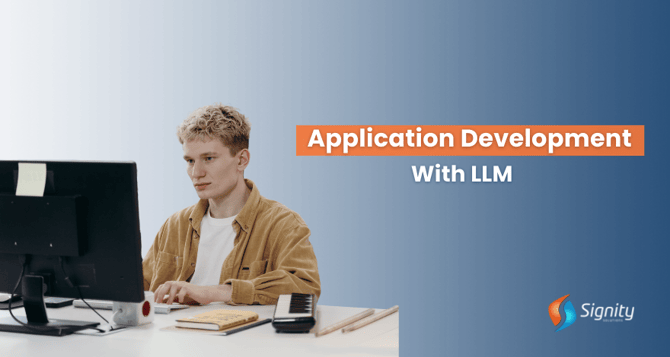Streamlining Application Development with LLMs
Transform your approach to application development with our innovative framework utilizing Large Language Models (LLMs). Experience a seamless integration process that not only enhances efficiency but also accelerates the entire development lifecycle.

Large Language Models (LLMs) have transformed the landscape of natural language processing, enabling developers to build sophisticated applications with advanced text understanding and generation capabilities. However, harnessing the full potential of LLMs often requires navigating complex frameworks and libraries.
In this article, we'll explore the concept of one-stop frameworks for LLM-based application development, offering comprehensive solutions that streamline the development process. We'll delve into the features, benefits, and technical implementation of one such framework, empowering developers to create powerful applications with ease.
Understanding One-Stop Frameworks
One-stop frameworks for LLM-based application development offer a unified platform that encompasses all stages of the development lifecycle, from data preprocessing to model deployment. These frameworks typically provide tools, APIs, and pre-built components that simplify tasks such as fine-tuning, inference, and integration, allowing developers to focus on building innovative applications without getting bogged down by technical complexities.
Key Features of One-Stop Frameworks
Data Preparation: One-stop frameworks often include data preprocessing tools that facilitate the preparation and formatting of datasets for training and evaluation. These tools may handle tasks such as tokenization, normalization, and data augmentation.
Model Selection and Fine-Tuning:
Developers can choose from a selection of pre-trained LLMs within the framework and fine-tune them for specific tasks or domains using intuitive interfaces. Fine-tuning parameters and hyperparameters are customizable to accommodate diverse use cases.
Model Evaluation and Metrics:
One-stop frameworks offer built-in evaluation metrics and tools for assessing the performance of fine-tuned models. Developers can analyze metrics such as accuracy, precision, recall, and F1 score to gauge the effectiveness of their models.
Inference and Deployment:
Once fine-tuned, models can be seamlessly deployed for inference within the framework. APIs and SDKs enable integration with various platforms and environments, allowing developers to deploy models in production settings with minimal effort.
Technical Implementation Using Hugging Face Transformers:
Hugging Face Transformers is a leading framework for working with pre-trained LLMs, offering a comprehensive suite of tools and APIs for model development and deployment. Let's explore a technical implementation of building an application with Hugging Face Transformers:


In this code snippet, we use Hugging Face Transformers to load a pre-trained GPT-2 model and tokenizer. We then define a text generation pipeline using the pipeline function, specifying the model and tokenizer. Finally, we generate text based on an input prompt using the pipeline.
Conclusion
One-stop frameworks for LLM-based application development offer a streamlined approach to building powerful applications with advanced natural language processing capabilities.
Start Your Transformation Today!
57% of Companies Report Increased Productivity with LLMs
By providing tools, APIs, and pre-built components, these frameworks empower developers to focus on innovation and creativity without being burdened by technical intricacies. With frameworks like Hugging Face Transformers, developers can unleash the full potential of LLMs and create transformative applications that enhance user experiences and drive digital innovation


%201-1.webp?width=148&height=74&name=our%20work%20(2)%201-1.webp)


.png?width=344&height=101&name=Mask%20group%20(5).png)


















